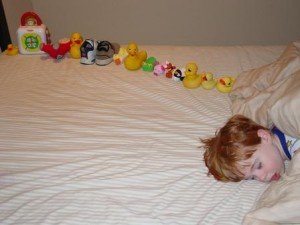Scientists from Duke University have created a free app that should make it easier to detect autism in young children. While autism can be better treated when it is detected at early ages, early diagnosis often does not occur.
Current estimates show that the average age of the diagnosis of autism in the United States is four years old. Much more could be done about the disorder if earlier detection became more widespread.
The new app that was released by the Duke University scientists is called Autism and Beyond. It should help to mechanize the process of screening for autism. The app is freely available on iOS devices to anyone who is willing to participate in their study.
Professor of electrical and computer engineering at Duke University Guillermo Sapiro was one of the creators of the app. Professor Sapiro says that the tool is extremely useful due to the fact that there are not currently enough professional autism screeners to meet the needed demand.
In the United States, parents often have to wait more than one year in order to see an autism specialist. Other countries have even longer wait times.
Sapiro says, “The current mental health system doesn’t scale, and there’s no way we can scale it. For us, empowering parents and caregivers is the way to go.”
Parents using the Autism and Beyond app will administer certain tests three times during a six month period. The tests are 20 minutes in length, and they involve having the child sit on their parent’s lap while watching short videos. The video clips are designed to elicit emotional responses from the child, such as laughter and smiles.
The child will be recorded by the camera of the phone as he or she reacts to the video, and the app’s software will analyze these responses. The analyses of the app will be compared to traditional human screenings in order to determine if the app functions properly. If the app is successful, it could be used by parents and schools across the world.
Traditional human screenings for autism involve researchers trying to get emotional responses out of children by using toys. In recent years, tests in which the human observers are replaced with an iPad recording the event have shown considerable promise. This led to the development of the Autism and Beyond app.
Some studies believe that the app will be even more effective than traditional human screenings. This is because the app will be able to determine when a smile or a laugh occurs more precisely than the human eye.
However, Saprio says that the app is not yet reliable enough to make a firm diagnosis of autism, but rather it is only meant to screen for troubling signs. Children who show signs of having autism based on the app will most likely be referred to a professional for further testing.
While the app still needs some work, it could be a great way to reduce the average detection age for the worrying disorder.
Stay Connected